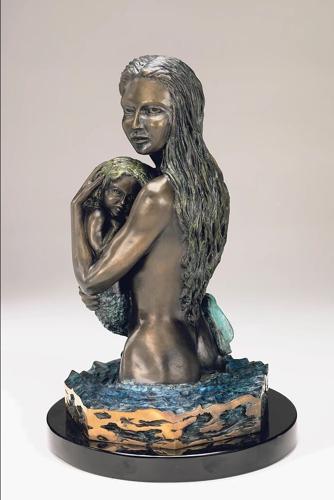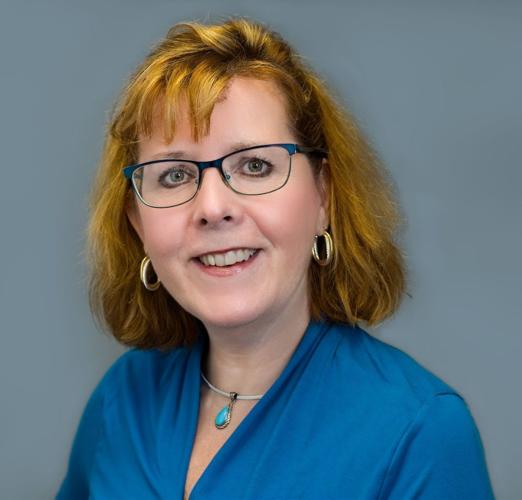Most folks locally are pretty aware of the Sculpture in the South, unless one is a transplant like me. They’ve been in my file to do a write up on. The residents of Summerville expressed their desire for public art at community meetings back in 1993.
With works by sculptors who have their art in the permanent collection in Buckingham Palace, the Smithsonian National Zoo, the Leigh Yawkey Art Museum and art tours to China, this town can boast about the remarkable quality of sculpture placed in the public realm for the enjoyment of all. I spoke with its Executive Director, Jim Reaves and one of the sculptors, Scott Penegar whose work can be seen on ScottPenegarSculpture.com or facebook.com/scott.penegar.
Regan: Jim, tell us a little bit about where the organization began to where it is now for this type of artwork here.
Reaves: Sculpture in the South began in 1998 when two leaders in the D.R.E.A.M. organization decided to answer residents who asked if we could have sculpture in public places. The response of Nancyjean Nettles and Lena Cox was to create a nonprofit with a local board of directors to “promote the appreciation of sculpture through education and the creation of an accessible public sculpture collection that enhances our community.” This was in response to a comment that came during a workshop for the Town’s first comprehensive plan which has led the organization to where it is today.
R: How many artists are involved? How many pieces are displayed in the community? Are there plans for more pieces in the future and, if so, how would that work (a contest to attract sculptors)?
R: Hundreds! In the 14 years of the Show & Sale, we averaged more than 30 participants each year. There are 23 pieces in the public collection, an additional 22 in the B.I.R.D.S. project and five or six in what we call the extended collection (pieces by participating artists located in the area but not belonging to the town). We are always seeking to add to the collection. Additions come through various avenues. Individuals and groups sometimes approach us to assist them in acquiring works (but note that Sculpture in the South does not participate in fundraising for commemorative images of specific individuals). The board of directors may decide on a piece they like or we may receive an unsolicited proposal for an installation.
R: Tell us about the (permanent) exhibit you all have at the Public Works Art Center? Do you have another exhibit space, or is the rest of the art work out around town (in the public parks, etc.)?
R: The exhibit in the Public Works Art Center is a long-awaited opportunity for us to display small sculptures. We reach a lot of people through our outdoor collection because the town parks are well used by families and individuals, but small sculptures are more intimate and lend themselves to touching people on a more personal level. This exhibit at the Art Center allows us an educational opportunity to expose people to a large variety of work on a rotating basis.
R: You recently had Sculptor Jack Hill in town with selected works on display at the Public Works Arts Center?
R: The one man Show & Sale with Jack turned out beyond expectation. With the constraints caused by the pandemic, we were uncertain that we could have the interaction and still maintain a safe space for everyone. The turnout was terrific and the feedback from everyone who visited was outstanding. We will continue to invite individual artists on a regular basis. COVID-19 willing in conjunction with our “Spotlight on Sculpture” event in May, we will have another mini-Show & Sale, this time with four or five sculptors.
R: Scott, tell us about the turtle, “It’s a Keeper” piece you did that is displayed in Azalea Park?
Penegar: I was excited to be asked to sculpt the turtle. It is a Yellow Belied Slider, a very common species inhabiting freshwater ponds throughout the southeast. I am a local wildlife sculptor and focus on native animals. I was fortunate to have easy access to catch one out of a nearby pond to use for reference! My kids named her Ned. To observe the subject up close is invaluable with realistic sculpture and offers greater insight to the intricacies of the animal. After finishing the sculpture, I returned Ned, unharmed, to the same pond. It was dedicated in December, 2016.
R: Scott, you also created the “Pileated Woodpecker” piece that is in the Dorchester-Summerville Museum. In general, how long does it take for you to make such artistic pieces?
P: The “Pileated Woodpecker” took about a month to sculpt. As a wildlife sculptor, again, I like having the animal in front of me. I did not have access to a live specimen, but I did have a taxidermy one to use for reference. I also use photography and YouTube videos to gain more insight. It was dedicated in November, 2015.
R: Jim, what’s next for this nonprofit? How can people get involved to support your work?
R: We can always use ideas, volunteers, and opportunities. People do not have to know anything about sculpture to help, they just need a desire to learn and enjoy. Contact us by email at sculptureinthesouth@gmail.com or visit our website at www.sculptureinthesouth.com.













